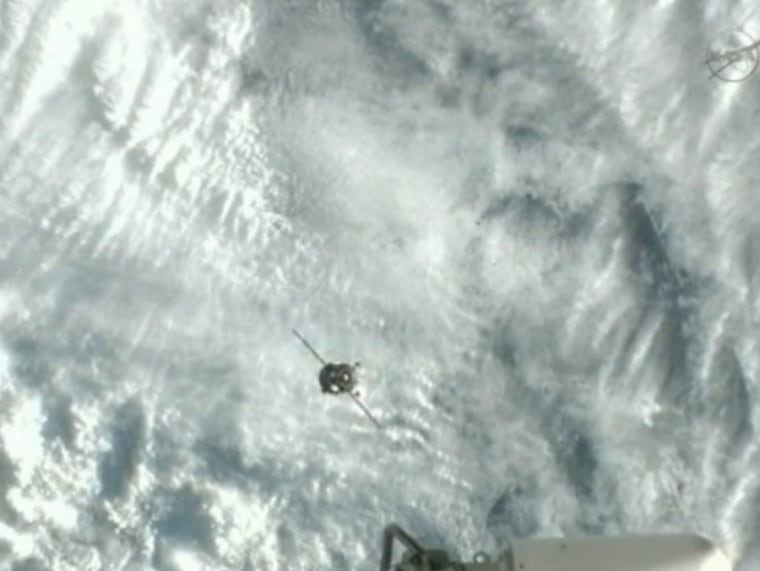The three newest residents of the International Space Station arrived at the high-flying laboratory Friday morning aboard a Russian Soyuz spacecraft.
At 9:09 a.m. EST the capsule delivered Canadian Space Agency astronaut Chris Hadfield — who will become the station's first Canadian commander — as well as Russian Federal Space Agency cosmonaut Roman Romanenko and NASA astronaut Tom Marshburn. The spaceflyers' journey started Wednesday when they launched from Kazakhstan's Baikonur Cosmodrome at 7:12 a.m. EST.
After docking, the astronauts performed leak checks on the seal between their Soyuz TMA-07M capsule and the space station's docking port on the Rassvet module.
The Associated Press reported that almost three hours passed before pressure was equalized between the capsule and the space station, allowing for safe entrance. As the hatches were unlocked, the six colleagues exchanged hugs and posed for photos as they floated in the weightless atmosphere of the station.
Minutes after entry, AP said, Hadfield could be heard saying in English: "I love what you've done with the place."

Complete crew
Three crew members are already living onboard the space station awaiting the new arrivals: commander Kevin Ford of NASA and cosmonauts Oleg Novitskiy and Evgeny Tarelkin, both flight engineers for the station's Expedition 34 mission. Now that the new trio has joined them, the Expedition 34 team is complete, bringing the orbiting laboratory back up to its usual six-person crew complement.
Romanenko, who has flown to the space station once before, said that a six-person team is key for the kind of work they want to do in the lab.
"I think we need to continue as we've been doing, six people per increment," Romanenko, a veteran of one previous trip to space, said in a preflight interview with NASA. "I think this will again maximize the number of experiments that we do on station. Also, this will facilitate the process of adapting to space. It will help us develop skills that we'll be able to use when flying people to other planets."
While working and living in orbit, the spaceflyers will be responsible for monitoring the 110 experiments onboard, as well as keeping their bodies in shape, and performing maintenance to keep the station running smoothly.
First Canadian commander
In March 2013, Ford, Novitskiy and Tarelkin will head back to Earth, leaving Marshburn, Romanenko and Hadfield alone on the space station to begin the Expedition 35 mission. At this point, Hadfield will take over for Ford as mission commander, making him the first Canadian astronaut to hold that position on the orbiting complex.
"It's a big deal for me, but also it's a big deal for my country, for my space agency and for where I'm from, and I'm happy that people are interested in it," Hadfield said in a preflight NASA interview.
This flight marks Hadfield's third trip to space, and second visit to the International Space Station.
"I'm really looking forward to not just visiting space but moving to Earth orbit and having all of the internal changes, the understanding and the revelation that comes with that," Hadfield said during a preflight interview with NASA. "I'm really looking forward to it."
Before joining the astronaut corps in 2004, Marshburn worked as a flight surgeon for NASA. He flew to the space station once before, in 2009, on the STS-127 space shuttle mission.
"I've experienced 11 days docked at the space station, 16 days in space on my last flight, so getting back to life in zero gravity, that is never boring, everything from putting on your clothes to brushing your teeth to working to transfer of hardware, all of its fun in zero-g," Marshburn told NASA before the launch. "I can’t wait to do that again."
Follow Miriam Kramer on Twitter @mirikramer or Space.com @Spacedotcom. We're also on Facebook and Google+.
